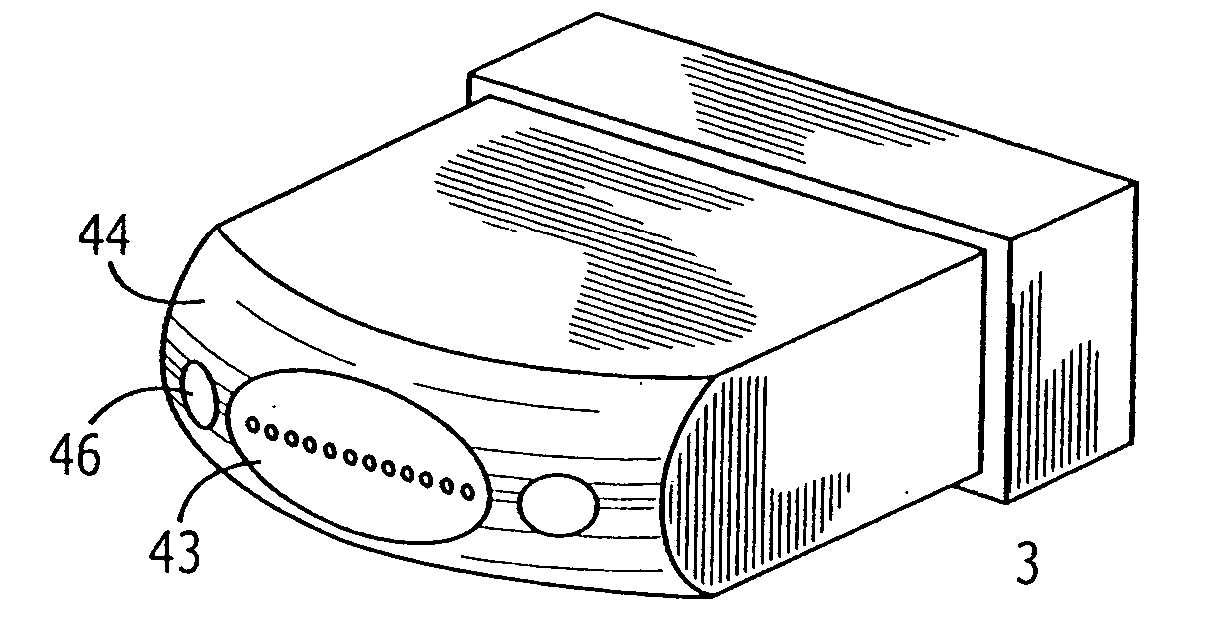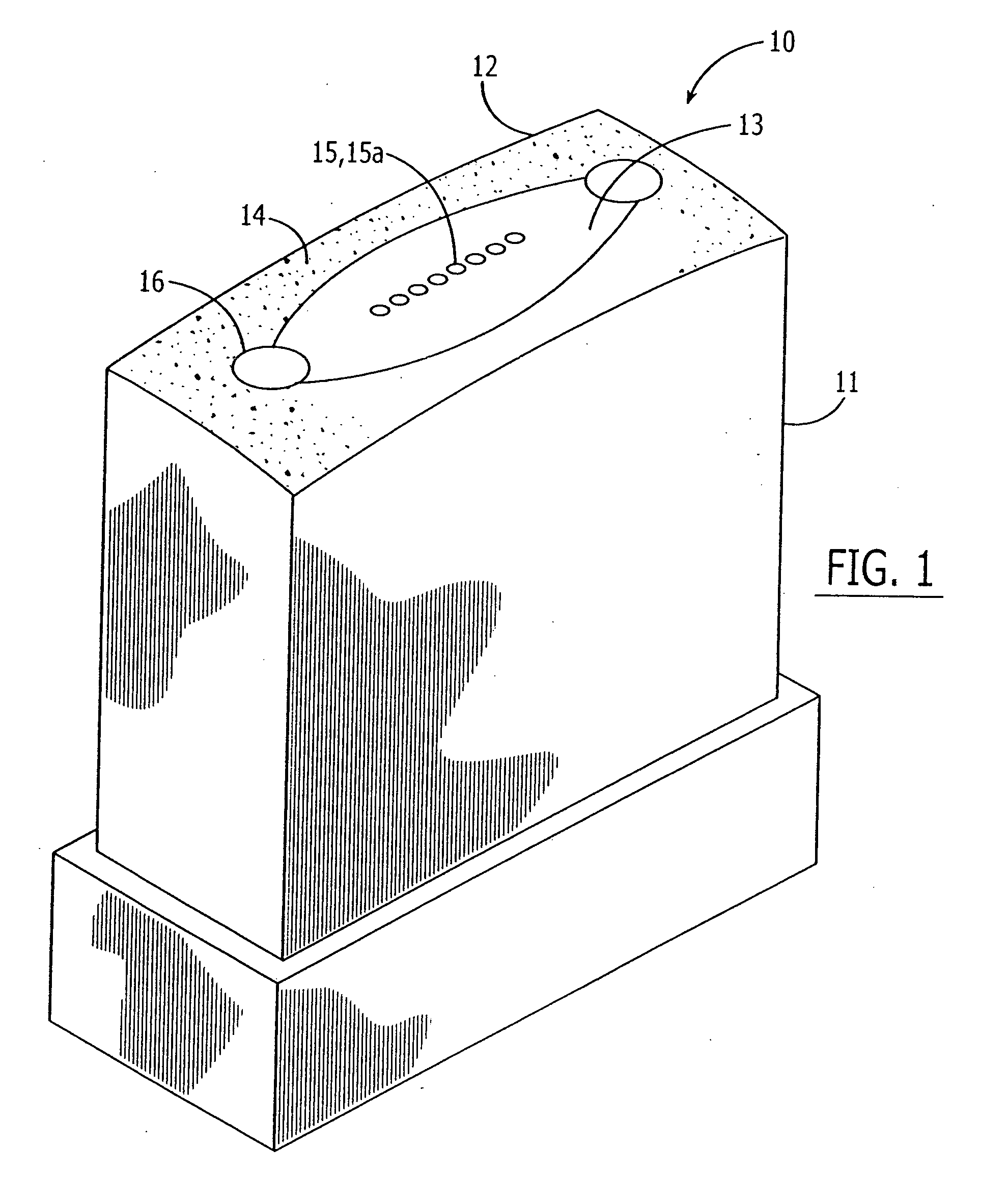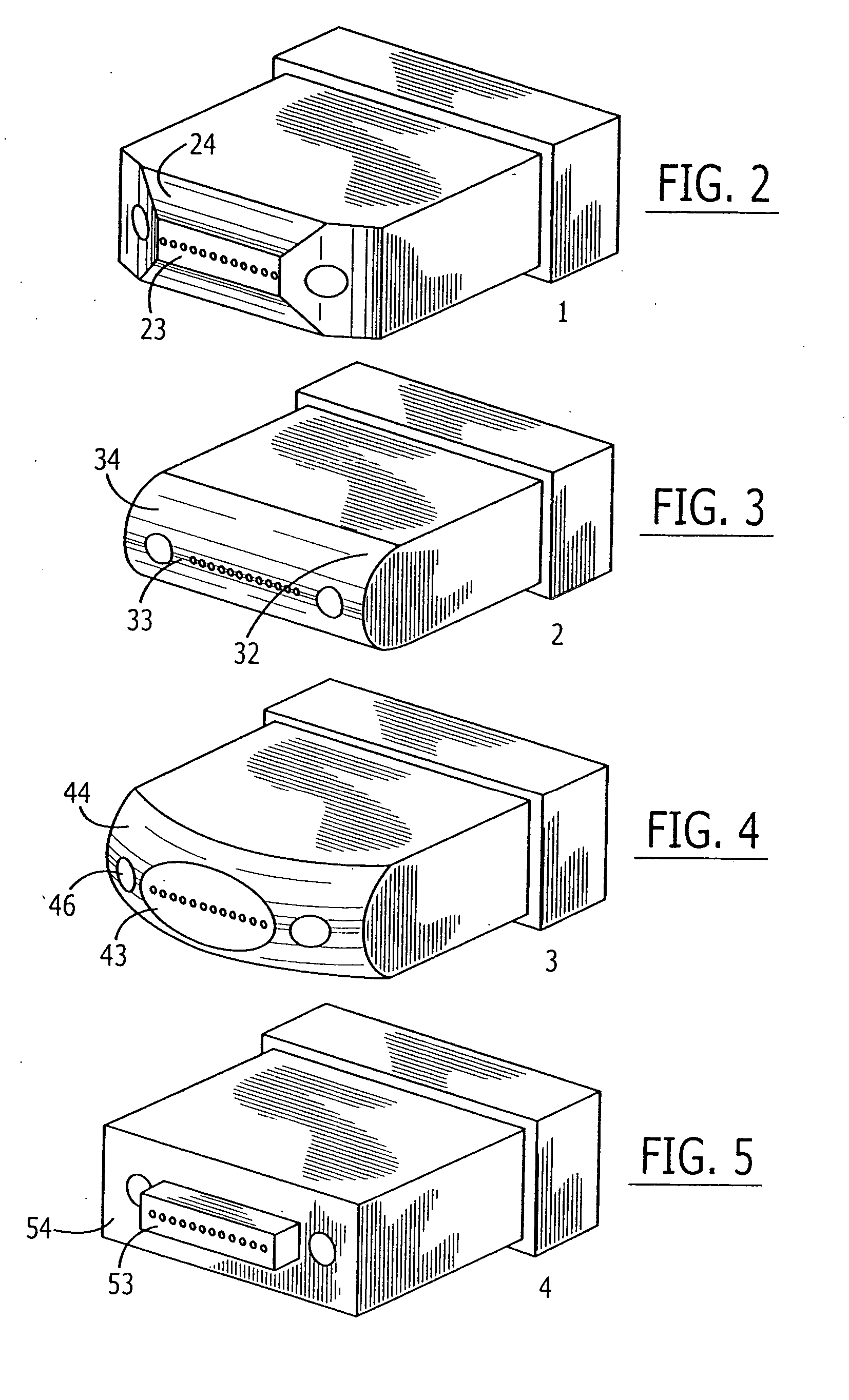Multifiber ferrule
a multi-fiber ferrule and fiber technology, applied in the field of ferrules, can solve the problems of reducing the area of the mating surface of the ferrule, affecting and affecting the appearance of the component, so as to improve the design of the ferrule and reduce the area of the mating surfa
- Summary
- Abstract
- Description
- Claims
- Application Information
AI Technical Summary
Benefits of technology
Problems solved by technology
Method used
Image
Examples
Embodiment Construction
[0016] Referring to FIG. 1, a preferred embodiment of the ferrule assembly 10 of the present invention is shown. The ferrule assembly 10 comprises an array of optical fibers 15 disposed in a ferrule 11 such that the mating end 15a of each fiber is presented for mating with another connector or optical interface. The ferrule has a front and rear orientation and a front surface 12.
[0017] As used herein, the term “front surface” refers to the surface of the forward facing side (s) of the ferrule. It should be understood that a front surface may correspond to one or more distinct surfaces which may or may not be contiguous. The front surface 12 comprises a mating surface 13 and a non-mating surface 14. The mating surface 13 extends forward beyond the non-mating surface 14 and presents the mating end faces of at least one of the fibers 15.
[0018] An important feature of the present invention is that the mating surface is just a fraction of the front surface. In a preferred embodiment, t...
PUM
 Login to View More
Login to View More Abstract
Description
Claims
Application Information
 Login to View More
Login to View More - R&D
- Intellectual Property
- Life Sciences
- Materials
- Tech Scout
- Unparalleled Data Quality
- Higher Quality Content
- 60% Fewer Hallucinations
Browse by: Latest US Patents, China's latest patents, Technical Efficacy Thesaurus, Application Domain, Technology Topic, Popular Technical Reports.
© 2025 PatSnap. All rights reserved.Legal|Privacy policy|Modern Slavery Act Transparency Statement|Sitemap|About US| Contact US: help@patsnap.com



